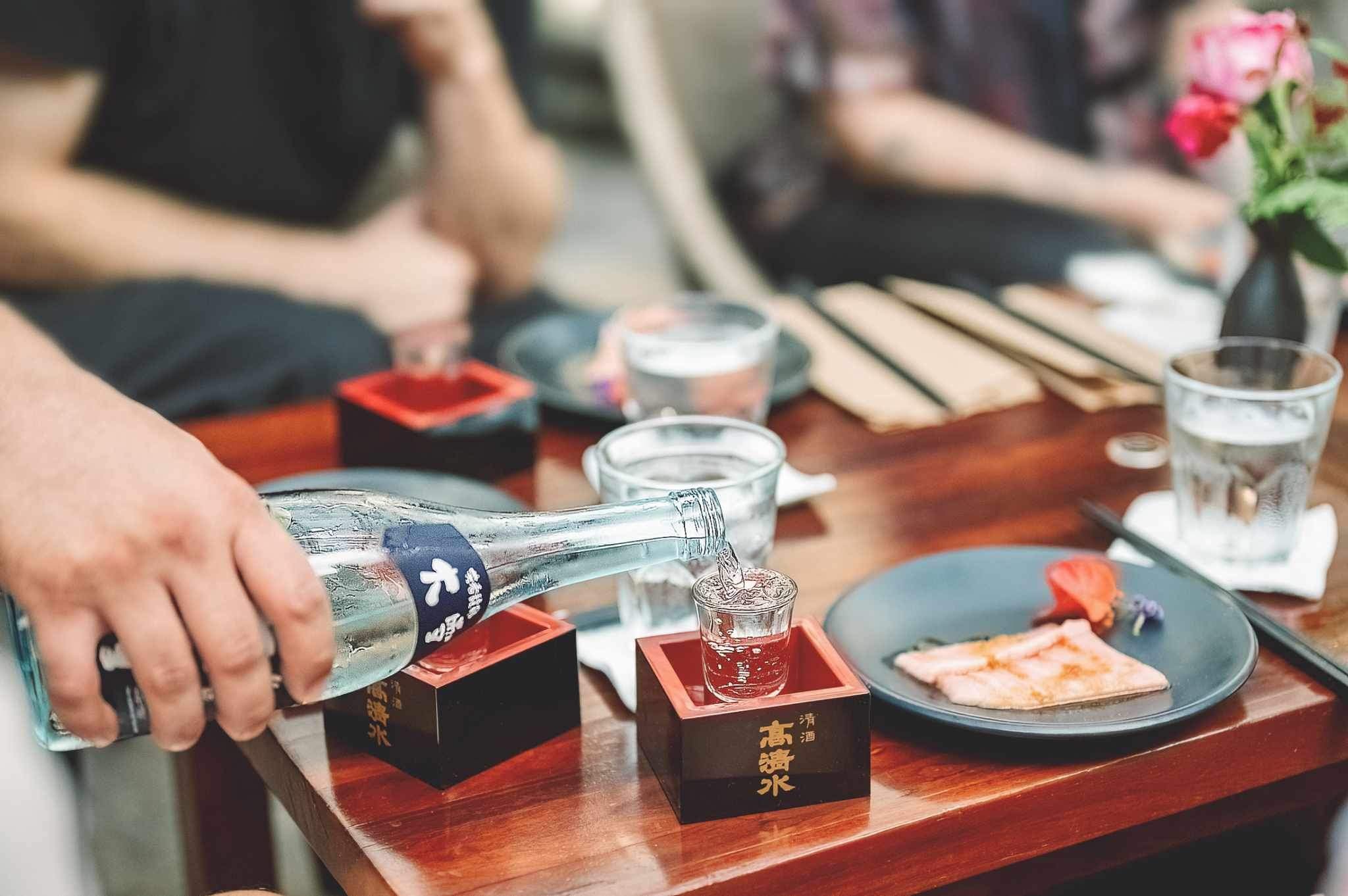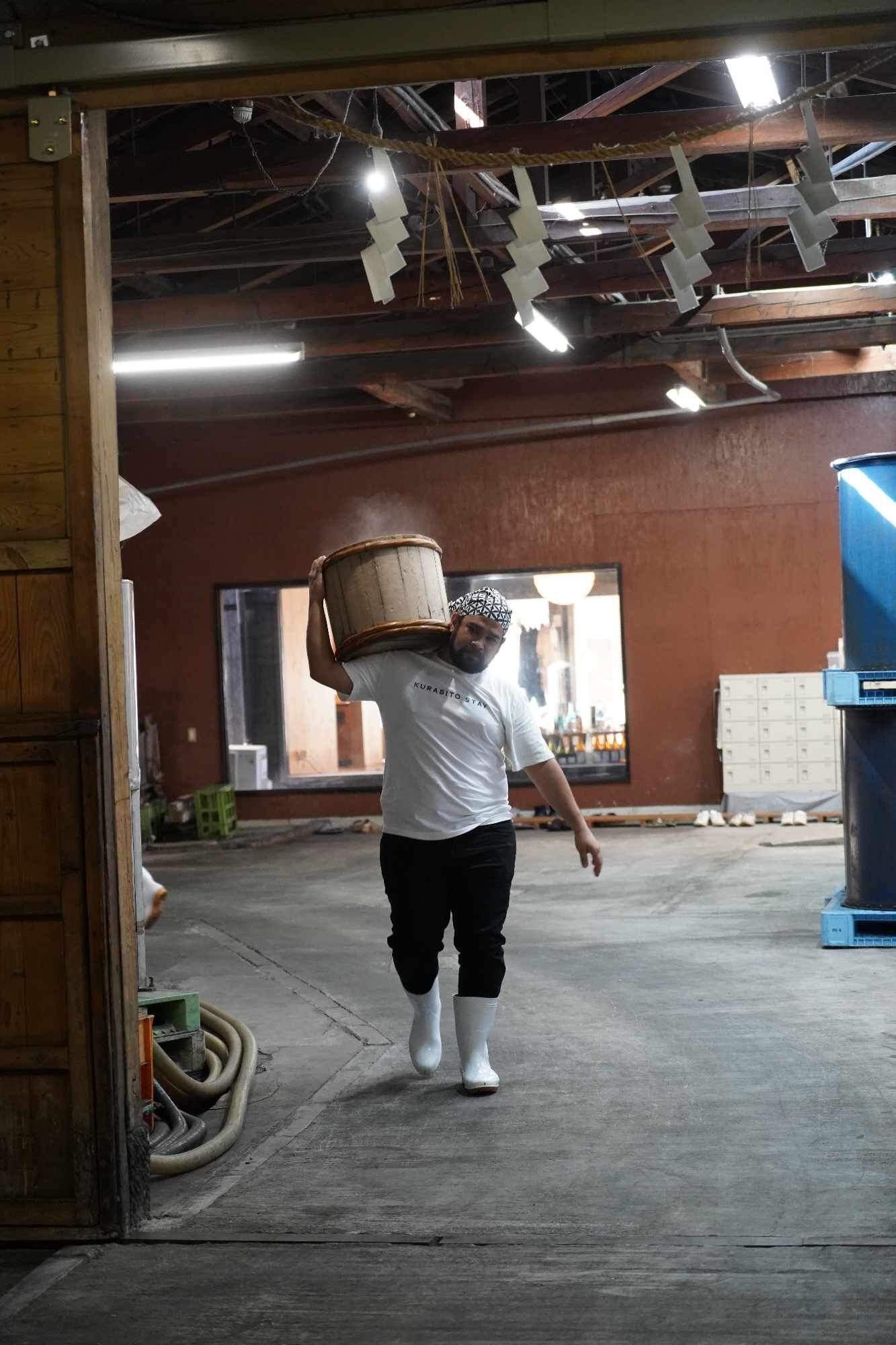Sake at Casita & Garden
When the team behind Casita & Garden envisioned the wine garden, they wanted to provide not only an inviting space with delicious wines and food but also give customers the opportunity to experience something rapidly growing in popularity across Mexico, sake.
Driven by the passion of Rafael Martinez, one of the founders, Casita & Garden now offers over 100 different sake labels, the largest sake offering in Puerto Vallarta and one of the largest in all of Mexico.
Rafa, a musician, and professional drummer, born in Guadalajara, and who now calls Puerto Vallarta home, first became interested in sake on his first trip to Japan seven years ago while celebrating his birthday. Initially focused on drinking Japanese beer and whiskey, Rafael decided to give sake a try. And just like that, he found a new passion in life and embarked on a journey that would immerse him in the Japanese culture, language and the national drink, sake.
What was your first impression of sake?
Rafa: I found it highly aromatic, refreshing and a drink that provided a relaxed “buzz”. And because I happened to indulge in sake…just a little…I found that I didn’t get a hangover.
And now that you know a lot about sake, why do you think someone may be less likely to get a hungover if they indulge?
Rafa: Sake is 80% water and water is always a good thing. In addition, it’s rich in amino acids, is free of sulfates and doesn’t have any additives. It’s a “healthy”, natural drink!
Any other first impressions?
Rafa: Sake also reminded me of a drink from my childhood, Lechuguilla, which I think originated in Jalisco, my home state. It’s a fermented drink but it’s made from the agave plant and doesn’t have alcohol. But like sake it’s also really refreshing.
Being from the country of tequila and mezcal, how does sake compare?
Rafa: Similar to tequila and mezcal, sake is rich in tradition and deeply rooted in culture and the identity of the country. Also, like tequila and mezcal, the ingredients are simple, the fermentation process is complex and there is great pride in the tradition in making the drink. I think sake pairs much better with food, like other wines.
For someone new to sake, what’s the best way to learn about it?
Rafa: Drink it! Try different types. I guarantee there is a sake taste for everyone. Also, try it with food, which can enhance both the food and the sake. Like other drinks and spirits, you need to find the type of sake that most appeals to your palate. One way to get introduced to sake, is to try one of our sake tastings that we offer daily. We also do special sake events, like the one on January 18 where we’ll do a sake and food pairing and have a more in-depth discussion about sake. The events are also a great way to meet other people who are also interested in learning more about sake.
What made you want to become a sake sommelier?
Rafa: The more I immersed myself in Japanese culture, the language, and sake, the more I wanted to learn. I first joined an online group of sake enthusiasts and that led to meeting other people in the industry. The more I learned and the more people I met fueled my passion and one thing led to another, and now I’m a sake sommelier. It’s been an incredible experience.
What does it take to become a sake sommelier?
Rafa: It’s a combination of education, training, and tasting. Lots and lots of tasting…it’s my favorite part. I enrolled in the Japan Sommelier Association (JSA) certification program. The programs provide material that familiarizes you with sake history, production, regions, tasting techniques, and food pairings.
Ultimately, all the studies and tastings led to a two-day certification exam last September. I’ve been studying Japanese for 12 years and I’m a certified interpreter and so passing the certification exam, in Japanese (the second Mexican to do so), is an accomplishment I’m very proud of.
Sake Brewing
Sake brewing likely originated in ancient Japan, around the 3rd century BCE. Early sake production was simple, involving the fermentation of rice with natural yeast and enzymes.
Over time, Japanese brewers refined the sake brewing process, incorporating new methods and ingredients. By the 8th century CE, sake production had become more standardized, with the introduction of the koji mold to convert rice starch into fermentable sugars.
In the 12th to 16th centuries, sake brewing guilds, known as "brewers' guilds" or "sakaya," emerged in Japan. These guilds played a crucial role in regulating sake production and maintaining quality standards. Beginning in the 17th century sake brewing saw significant advancements, including the use of polished rice. Brewers discovered that removing the outer layers of rice (bran) resulted in a cleaner and more refined sake.
You recently visited sake breweries in Japan. What was that experience like?
Rafa: I spent a month in Japan in 2023. In addition to the sake certification exam, I traveled over 3000 KM, saw 12 cities, and visited 32 sake breweries. I wanted to get to know some of the breweries of the sake that we sell at Casita & Garden.
I spent 5 days at one brewery, learning about the entire process. I was so impressed with their patience, kindness, and interest in sharing information about the brewing process with me. I’m already planning my next trip as I’d like to immerse myself more in the brewing process. You never know…someday we could have a sake brewery in Puerto Vallarta.
So what’s next for you and Sake at Casita & Garden?
Rafa: I think sake is a lifelong learning endeavor, so I plan to continue to immerse myself in the world of sake. I’ve met some incredible people along the way who have been generous in sharing information with me. I want to do the same. I believe interest in sake is growing in Puerto Vallarta. I started a sake appreciation group with Mexican nationals as an opportunity to discuss sake history, types of sake, brewing techniques, and of course tastings, in Spanish. We’ll also look for ways to increase the program at Casita & Garden, promoting opportunities for people to learn about and taste sake. I’m excited about the future.










